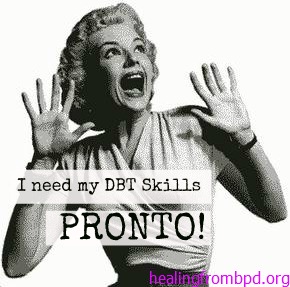BPD Myth Busting: 7 common myths about Borderline Personality Disorder
Bon debunks 7 common myths about Borderline Personality Disorder (BPD).
Myth 1: BPD is untreatable
Borderline Personality Disorder is treatable and in the past 15 years numerous evidence-based treatments have been designed to treat the disorder. Dialectical Behavior Therapy (DBT), Mentalization-based therapy and Transference-focused therapy have all been shown to improve the behavior, cognitive abilities and functioning of people with BPD.
Myth 2: BPD only affects women
A recent study by the NIAAA showed that the lifetime incidence of BPD was essentially equal in men and women. It has been widely accepted for many years that the gender breakdown of BPD is 75% female. It seems that the only reason that the 75% figure exists is that women are more likely to seek help for the disorder. In the case of men, they are less likely to seek help and more likely to end up in jail.
Myth 3: BPD is just a case of bad behavior
BPD is an actual mental/emotional disorder. The behavior is fueled by dysregulated emotions. If the emotions are well-regulated, the behavior will not take place. Since emotional dysregulation is a core feature of BPD, it should be one of the primary focuses. The behavior is what upsets the family members and loved ones. Yet it’s the emotions that are the engine for the behavior.
Myth 4: BPD is extremely rare
The same NIAAA study indicated a lifetime incidence of BPD in 5.9% of almost 35,000 adults. Earlier studies have shown a 2% occurrence. If it’s 5%, that’s one adult in 20 who has BPD.
Myth 5: Poor Parenting causes BPD
Recent studies have shown brain anomalies in the u-opiod system (pain relief) in the brain. Like clinical depression, which shows serotonin differences, a person with BPD seems to have a deficit in u-opiods and over-active u-opiod receptors. This can explain why one child may develop BPD and another does not, even when each is in the same home environment. That being said, many borderlines do experience abuse and/or neglect as children. The trauma associated with that abuse (or invalidation) seems to reinforce the natural BPD-like tendencies and causes the BPD to be more marked.
Myth 6: People with BPD are incapable of empathy
A recent book by Dr. Simon Baron-Cohen has received a lot of notice because he indicated that a lack of empathy was the root of evil. He also listed three conditions in which empathy is lacking: BPD, some forms of autism and psychopathy. In my experience, a person with BPD might lack empathy, yet that is only when they are in emotional pain. You can’t feel for others when you’re burning inside. Once the emotional pain becomes manageable, I find people with BPD to be quite empathetic. They understand emotions very well and if they can understand that emotions apply to other people, they show deep empathy.
Myth 7: People with BPD use suicidal gestures just to get attention
Many family members believe that suicidal gestures are merely “calls for attention.” I would counter that in the moment that the suicidal gesture occurs, the borderline really wants to snuff the pain and death seems like the only alternative. It is an ineffective use of skills and pain-quelling behavior. Most borderline suicide attempts are unplanned and impulsive. They will access whatever is on-hand – all the pills in the cabinet, for example – and impulsively try to commit suicide. However, all suicide attempts are serious and should be treated seriously and with compassion. Few people are in so much pain that they want to die. Borderlines are tragically such people.


2 Comments
Anna
Really enjoying your posts =)
Thanks!
Muna
Thank you for understanding